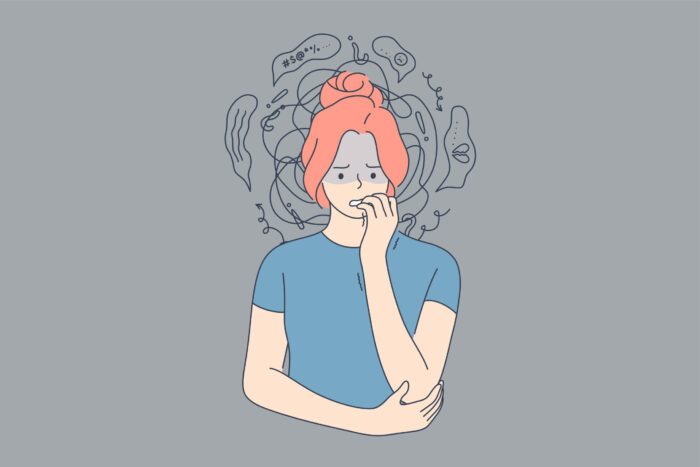Trauma is a complex and deeply personal experience that can leave lasting scars on the psyche. Whether it stems from a single harrowing event or prolonged exposure to distressing circumstances, trauma can disrupt one’s sense of safety, trust, and emotional stability. Fortunately, there are various therapeutic approaches aimed at helping individuals navigate the aftermath of trauma and reclaim their lives. One such approach that has gained significant recognition and success is Cognitive Behavioral Therapy or CBT for trauma.
CBT is a structured, evidence-based form of psychotherapy that focuses on the relationship between thoughts, feelings, and behaviors. It operates on the premise that our thoughts and beliefs about ourselves, others, and the world around us significantly influence our emotions and actions. By identifying and challenging negative or distorted thought patterns, CBT empowers individuals to develop healthier coping mechanisms and responses to life’s challenges, including trauma.
Understanding Trauma and its Impact
Before delving into how CBT can be applied to trauma, it’s essential to grasp the nature of trauma itself. Trauma can manifest in various forms, including but not limited to:
- Acute Trauma: Resulting from a single, often catastrophic event such as accidents, natural disasters, or violent assaults.
- Chronic Trauma: Stemming from prolonged exposure to stressful or abusive situations, such as domestic violence, childhood neglect, or combat experiences.
- Complex Trauma: Involving multiple incidents of trauma, typically occurring within interpersonal relationships or institutional settings.
Regardless of its form, trauma can have profound effects on an individual’s mental, emotional, and physical well-being. Symptoms may include intrusive memories, flashbacks, nightmares, hypervigilance, avoidance behaviors, mood swings, and difficulty forming and maintaining relationships.
The Role of CBT in Trauma Recovery
CBT offers a structured and goal-oriented framework for addressing trauma-related symptoms and fostering resilience. Unlike some traditional forms of therapy that primarily focus on exploring past experiences, CBT emphasizes the present moment and equips individuals with practical skills to manage distressing symptoms as they arise. Here’s how CBT can be effectively applied in trauma recovery:
- Psychoeducation: The therapist provides information about trauma and its effects, helping the individual understand their symptoms within a broader context. This knowledge fosters a sense of validation and reduces feelings of shame or self-blame.
- Cognitive Restructuring: Central to CBT is the identification and modification of maladaptive thought patterns related to the trauma. Through techniques such as cognitive restructuring and thought challenging, individuals learn to recognize and replace negative beliefs with more balanced and realistic ones.
- Exposure Therapy: In cases where avoidance behaviors are prevalent, exposure therapy may be utilized to gradually confront trauma-related triggers in a safe and controlled environment. This process desensitizes individuals to feared stimuli and diminishes the power of traumatic memories over time.
- Behavioral Activation: Trauma often disrupts one’s daily routines and activities, leading to social withdrawal and isolation. Behavioral activation techniques help individuals reengage with pleasurable and meaningful activities, restoring a sense of purpose and fulfillment in life.
- Skill Building: CBT equips individuals with a toolbox of coping skills, including relaxation techniques, mindfulness exercises, and communication strategies. These skills enhance emotional regulation and empower individuals to navigate future challenges more effectively.
The Evidence Base for CBT
Numerous studies have demonstrated the effectiveness of CBT in treating trauma-related conditions such as post-traumatic stress disorder (PTSD), anxiety, and depression. Meta-analyses have consistently found CBT to be superior to placebo or waitlist conditions, with significant reductions in symptom severity and improved overall functioning.
One landmark study published in the Journal of the American Medical Association (JAMA) compared the efficacy of CBT, medication, and a combination of both in treating PTSD. The findings revealed that while medication alone was effective in reducing symptoms, the combination of CBT and medication yielded the most significant and enduring improvements.
Cultural Considerations and Adaptations
It’s essential to recognize that the experience and expression of trauma may vary across cultures and communities. Therefore, culturally sensitive adaptations of CBT are crucial to ensure its effectiveness and relevance across diverse populations. Therapists must acknowledge the influence of cultural factors such as beliefs, values, and social norms in shaping individuals’ responses to trauma and tailor interventions accordingly.
Moreover, CBT techniques may need to be modified to accommodate linguistic, religious, or indigenous healing practices, enhancing accessibility and engagement for all individuals seeking support.
The Road to Recovery
While CBT offers a promising path to trauma recovery, it’s essential to acknowledge that healing is a nonlinear process, and there is no one-size-fits-all approach. Each individual’s journey toward recovery is unique, influenced by factors such as the nature of the trauma, available support systems, and personal resilience.
Moreover, CBT is most effective when integrated into a comprehensive treatment plan that may include medication, support groups, holistic therapies, and self-care practices. Building a strong therapeutic alliance between the individual and therapist is also crucial, fostering trust, safety, and collaboration throughout the healing journey.
Conclusion
Trauma can leave indelible marks on the human spirit, but it does not have to define one’s destiny. Cognitive Behavioral Therapy (CBT) offers a beacon of hope for those navigating the turbulent waters of trauma recovery. By addressing the underlying thoughts, beliefs, and behaviors that perpetuate suffering, CBT for trauma recovery empowers individuals to rewrite their narratives, reclaim their agency, and forge a path toward healing and wholeness.
As we continue to unravel the complexities of trauma and refine our therapeutic approaches, let us uphold the principles of compassion, empathy, and cultural humility in guiding individuals toward a brighter tomorrow—one step, one thought, one breath at a time.


